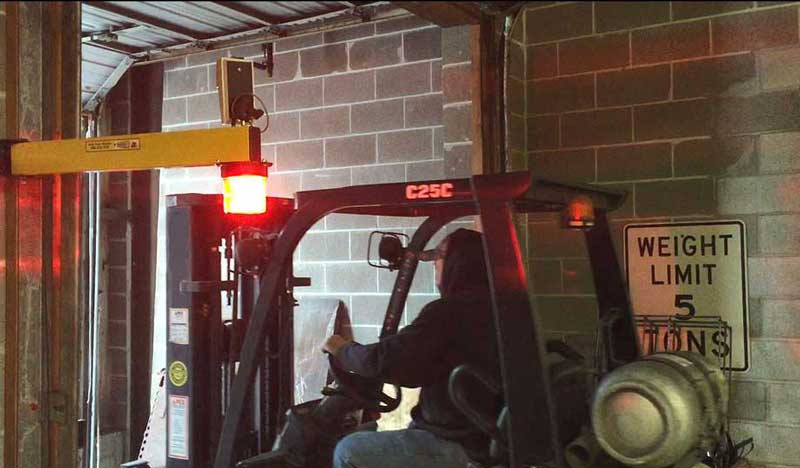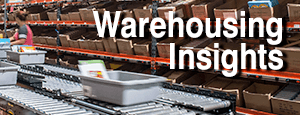Shipping Docks & Safety: Dealing with Blind Spots
How to reduce collision accidents near shipping/receiving areas

Shipping & receiving docks are a particularly dangerous area of most operations because so much activity takes place in a confined space. You have truck loading, unloading, staging, inspections, and much more. You have people like order pickers, drivers and guests potentially in the mix. In your average warehouse, the docks take up 20% of the square footage but host 80% of the activity. As you know, at times that activity can be fast-paced – even frenzied as full pallets are taken in, or loaded ones are being loaded into trailers. This is a time rife with possibilities for accidents. How can you prevent them?
A 2-way blind spots
When forklift drivers exit a truck, they are coming out blind into a zone behind the trailer where pedestrians can’t see them. Drivers are entering and leaving what amounts to a darkened cave. This creates a 2-way blind spot where neither party has a clear view of the other. Pedestrians are almost always around in these locations – drivers, managers, inventory and handlers. We have all seen the forklift driver waiting beside a loaded pallet as warehouse workers are scrambling to shrink wrap or finalize the load in the staging area.
If there are multiple dock doors being serviced, the hazards are amplified as lift trucks have many more angles to consider.
Additionally, drivers are often backing out with a large load on their forks. Their concentration is split between what’s behind them and a potentially tight space with large load inside the trailer. If a pedestrian is where he’s not supposed to be, the lift truck driver is at a serious disadvantage trying to see him.
Ways to make this area safer:
- Your drivers should be trained, checked, and constantly refreshed on safe driving procedures. The same goes for your employees who spend time in the warehouse or near the shipping docks. Too many companies train the drivers, but not the pedestrians.
- Guard where you can. If there are work areas, vital equipment, or racks nearby, protect them with solid guard rails.
- Use exclusion zones. Remove pedestrians from the staging areas. Assign truck drivers and other visitors to a lounge or elsewhere, so that they aren’t loitering near the dock doors.
- Take away reasons to be in the blind spots. Don’t allow clipboards, shop desks, or other things that might attract a person to be mounted on the spaces between dock doors. Place door controls outside the loading/unloading zones.
- Can everyone see/hear the fork trucks? Make sure forklifts have audible warning devices installed and that they are always working. Install bicycle flags on the lifts that precede them when they back out of trailers. This is also good for high rack bays.
- Mirrors are great. Both installed on the forklift and outside the dock doors. More visibility from all angles is always better.
- Consider more advanced safety systems such as motion sensors, proximity scanners, and radar detection.
Final thoughts
To make your docks safer, you must provide the forklift driver and the pedestrian the best possible information to avoid a potentially deadly accident. Make sure both understand the risks, and make sure both know where to be, and when.

Tags: shipping & receiving, Safety & Ergonomics, dock layout, warehouse safety, forklift safety
Scott Stone is Cisco-Eagle's Vice President of Marketing with 35 years of experience in material handling, warehousing and industrial operations. His work is published in multiple industry journals an websites on a variety of warehousing topics. He writes about automation, warehousing, safety, manufacturing and other areas of concern for industrial operations and those who operate them.



